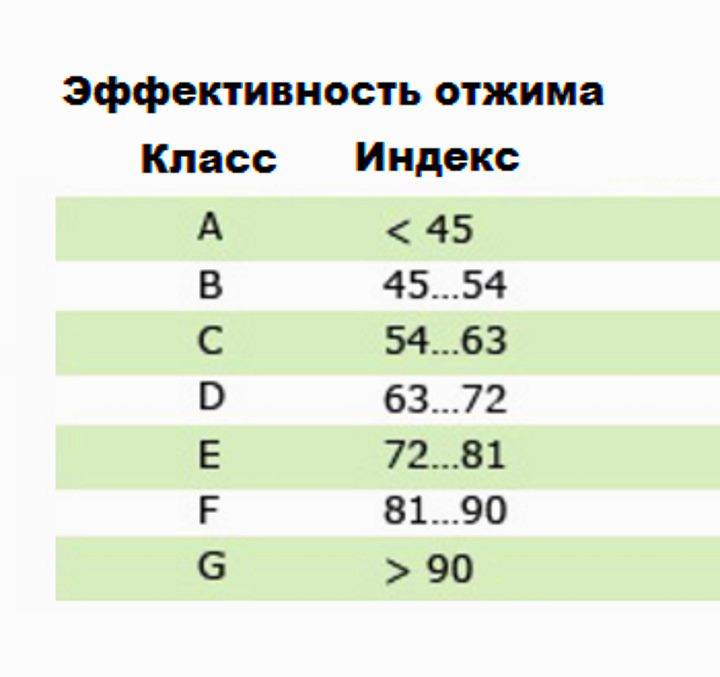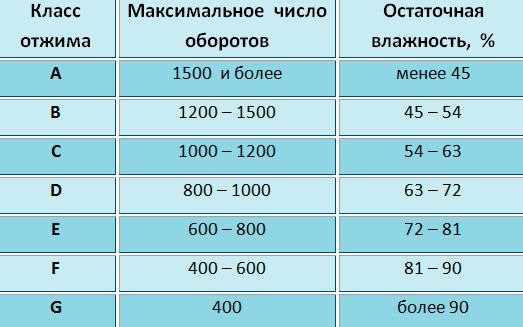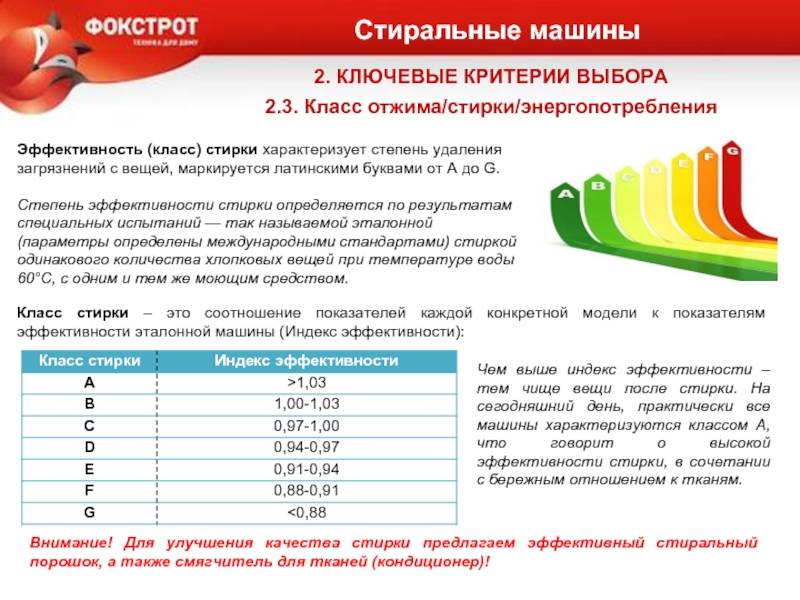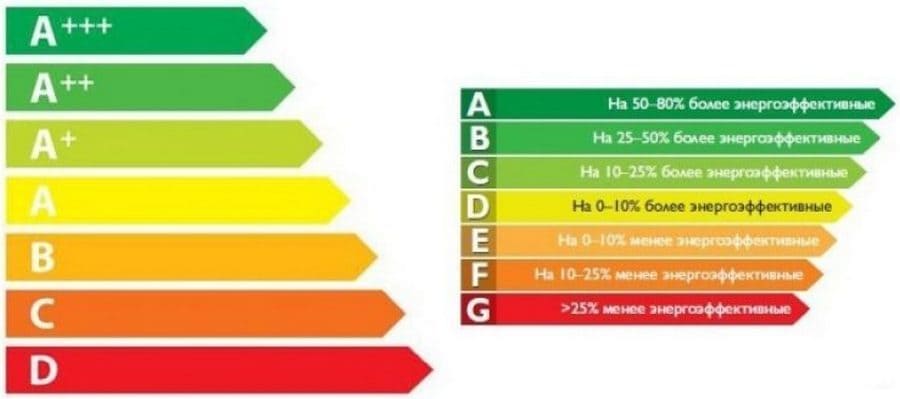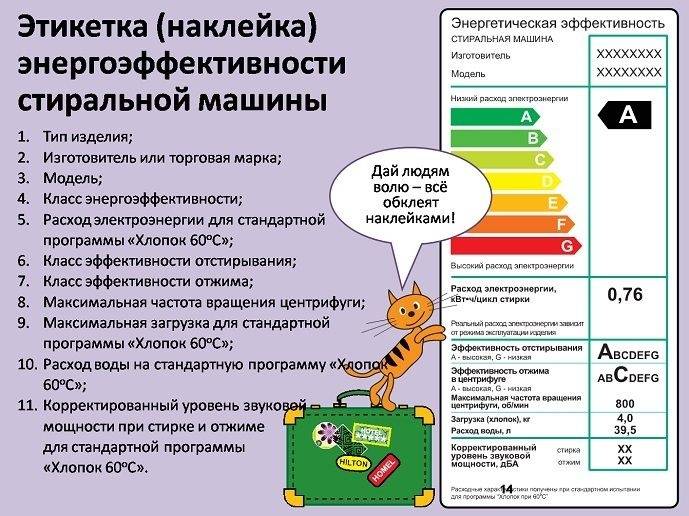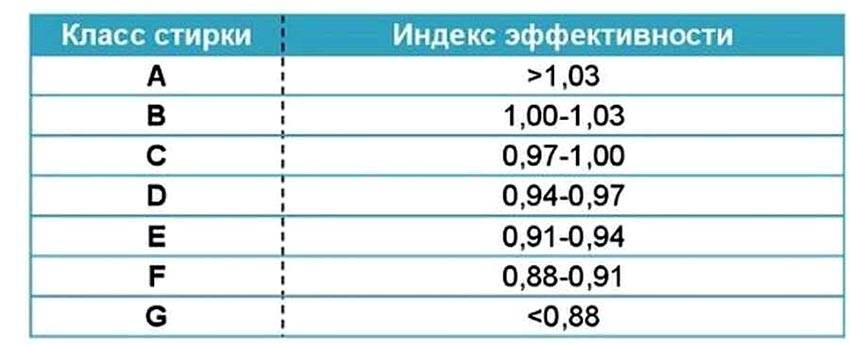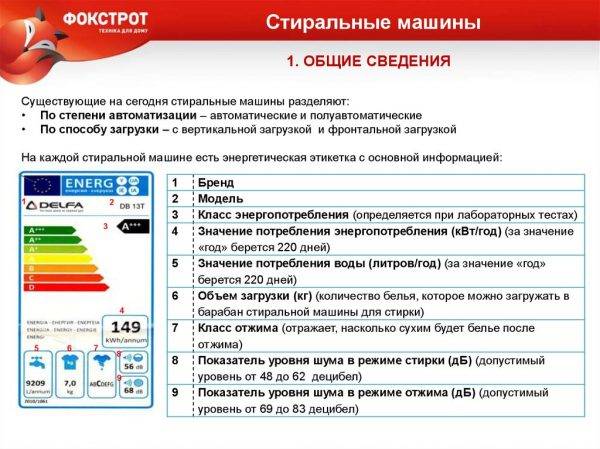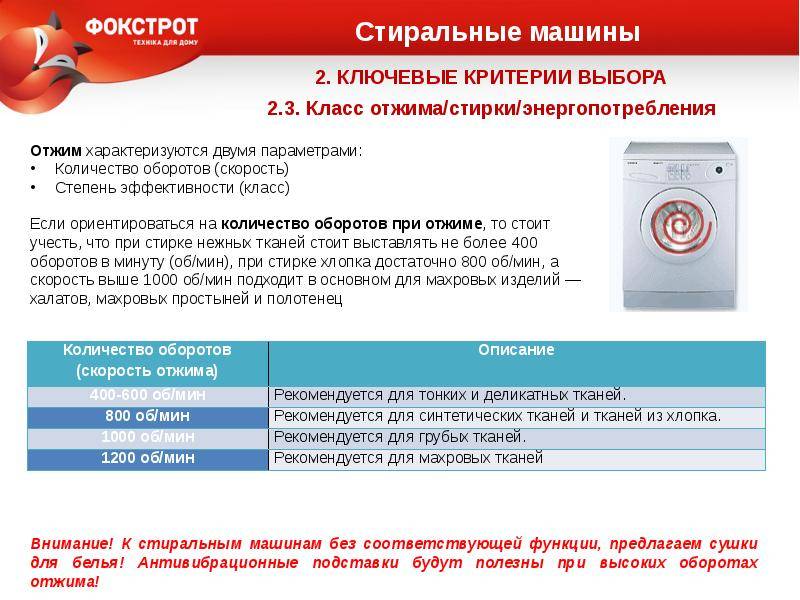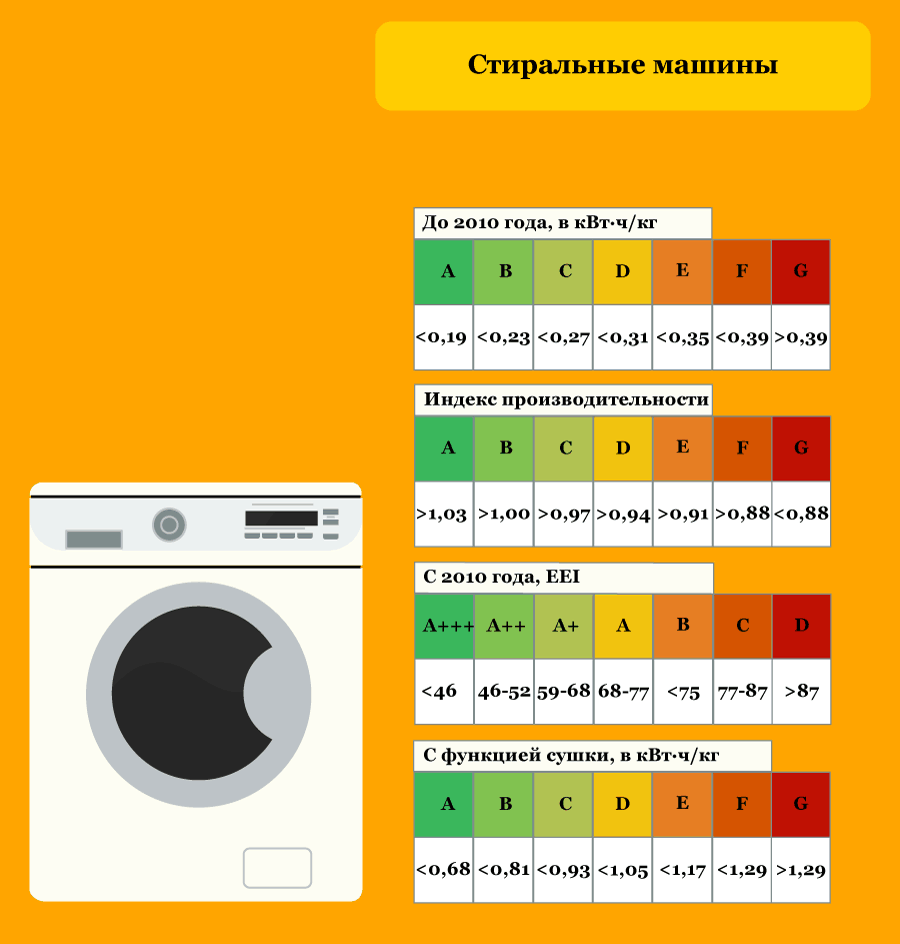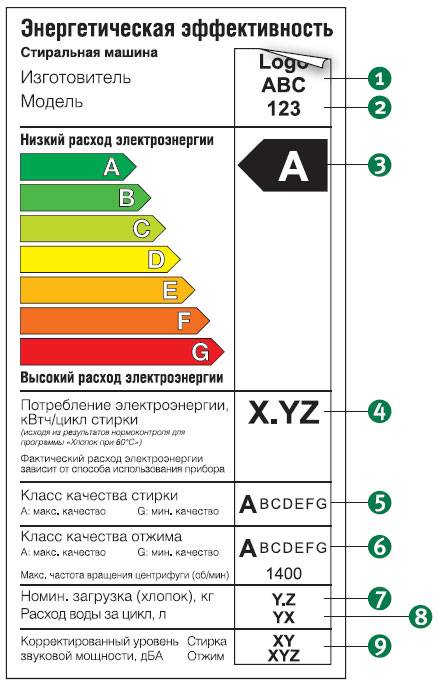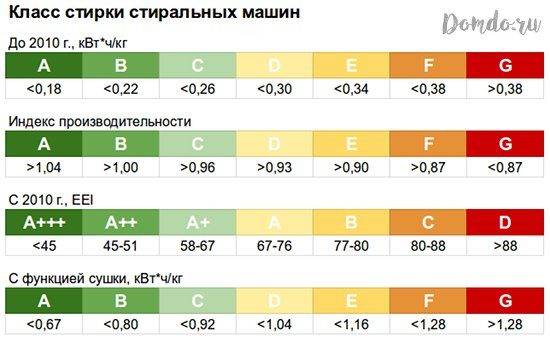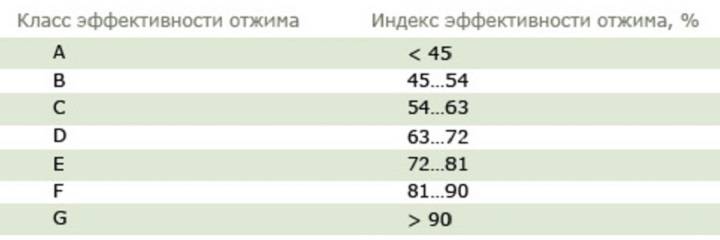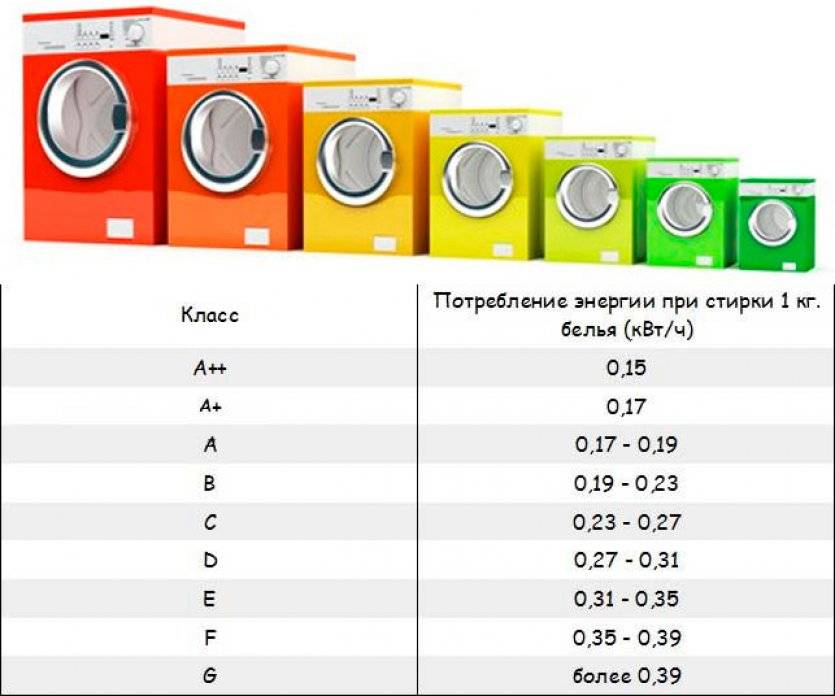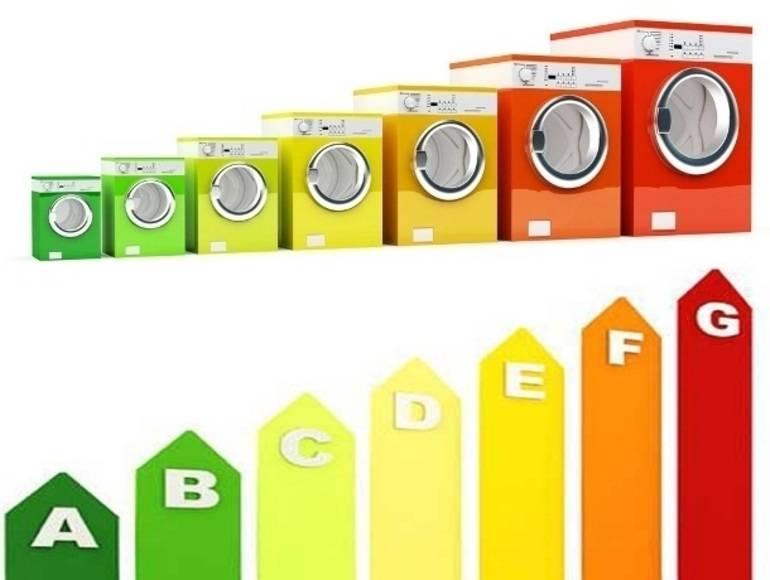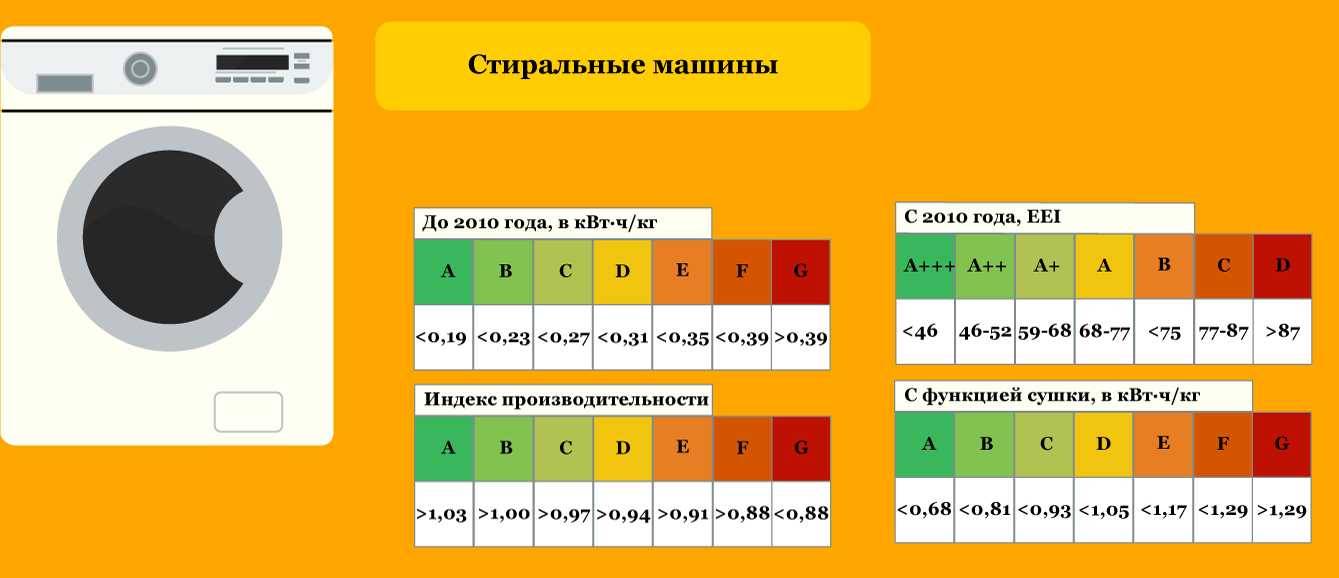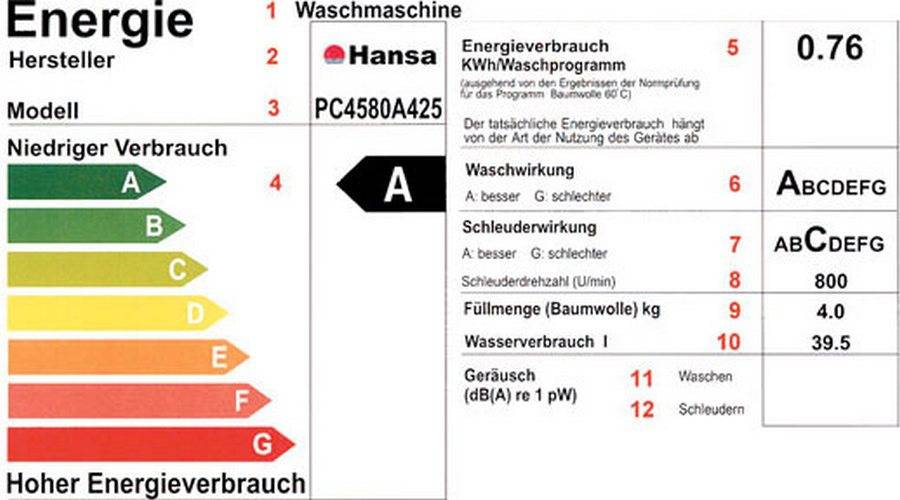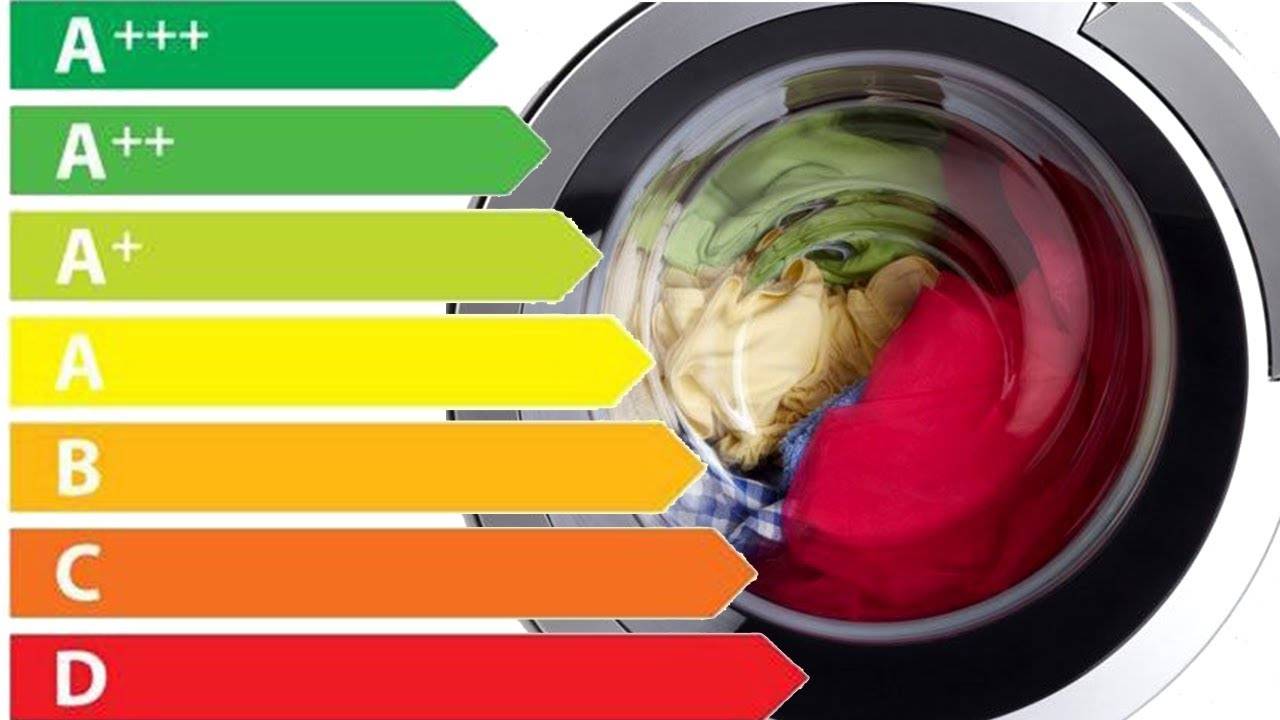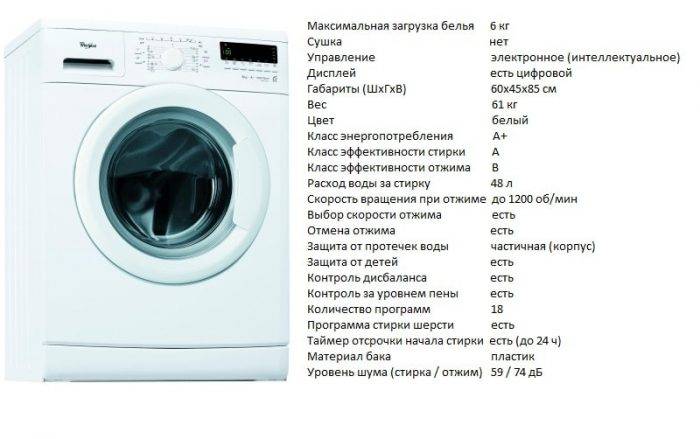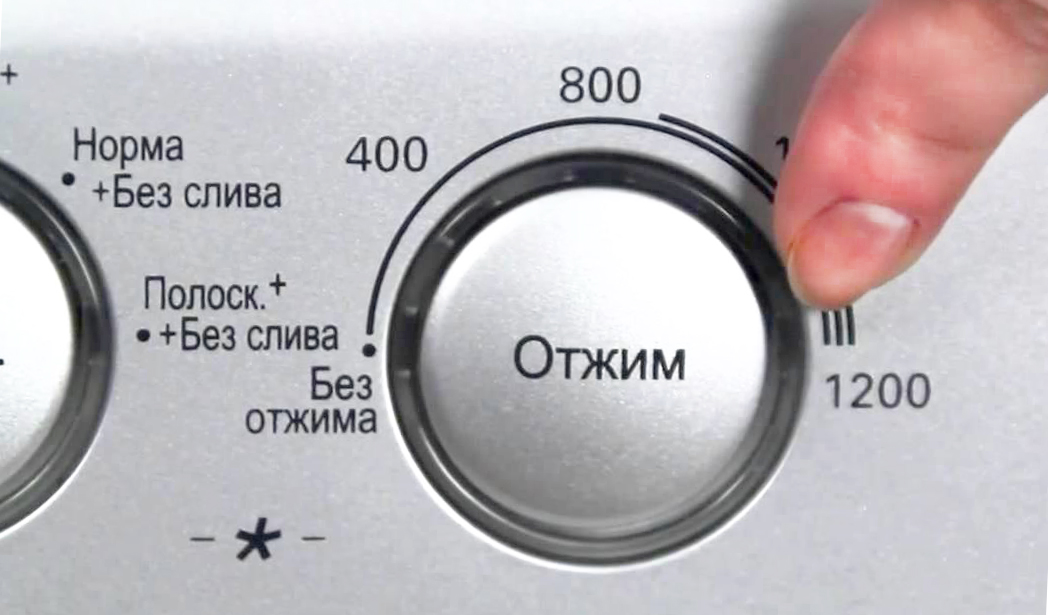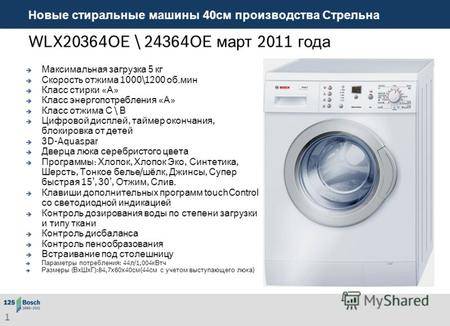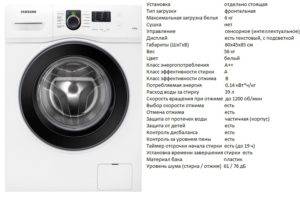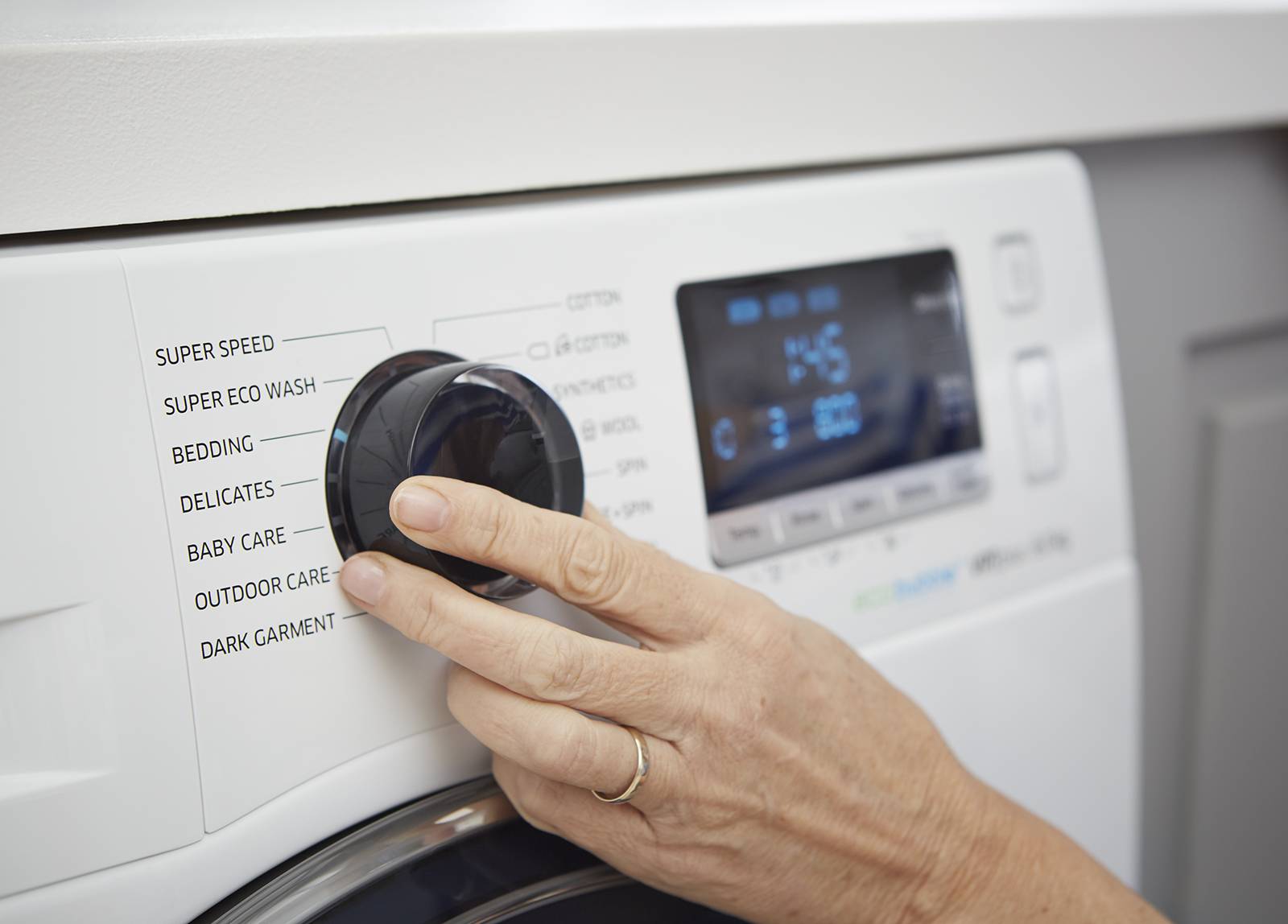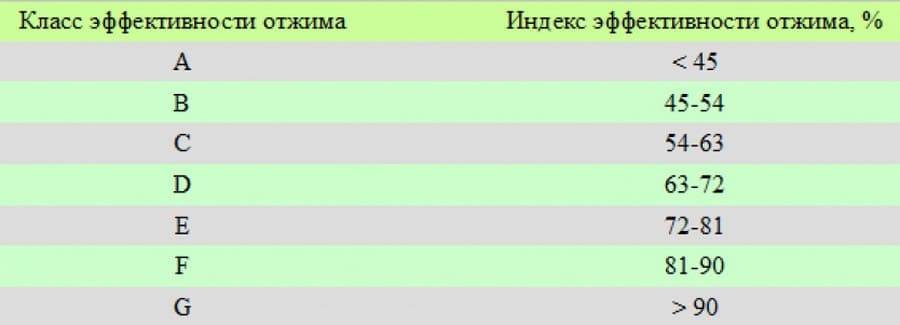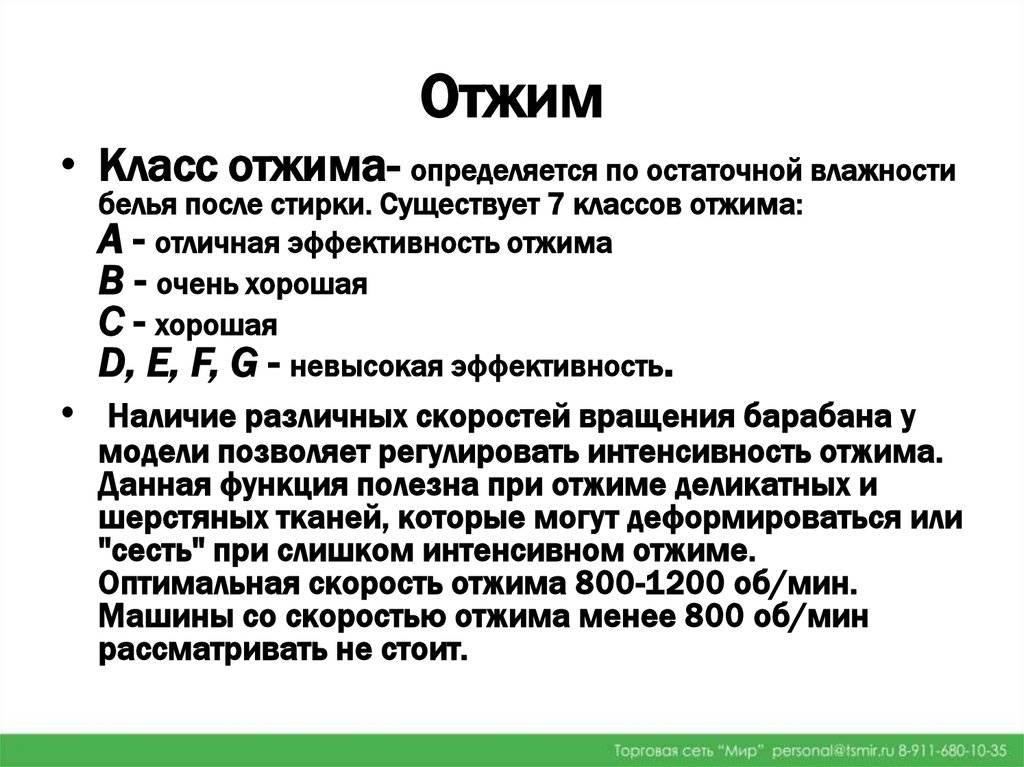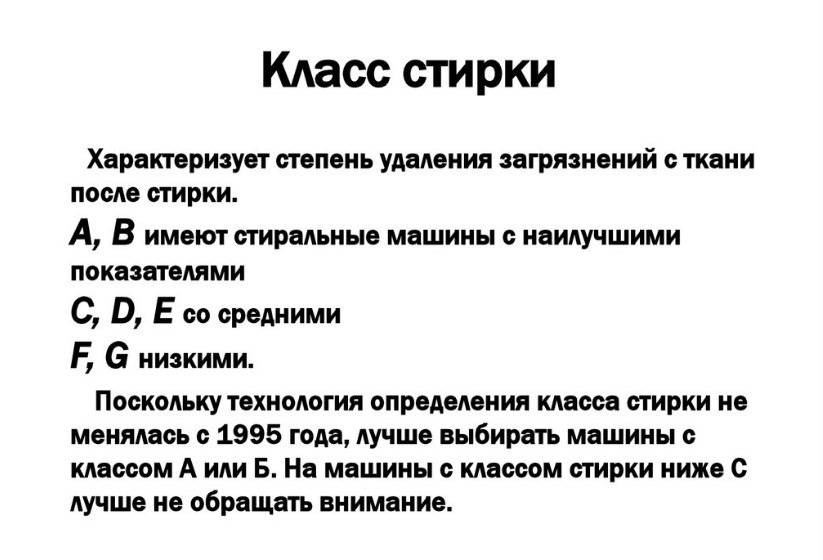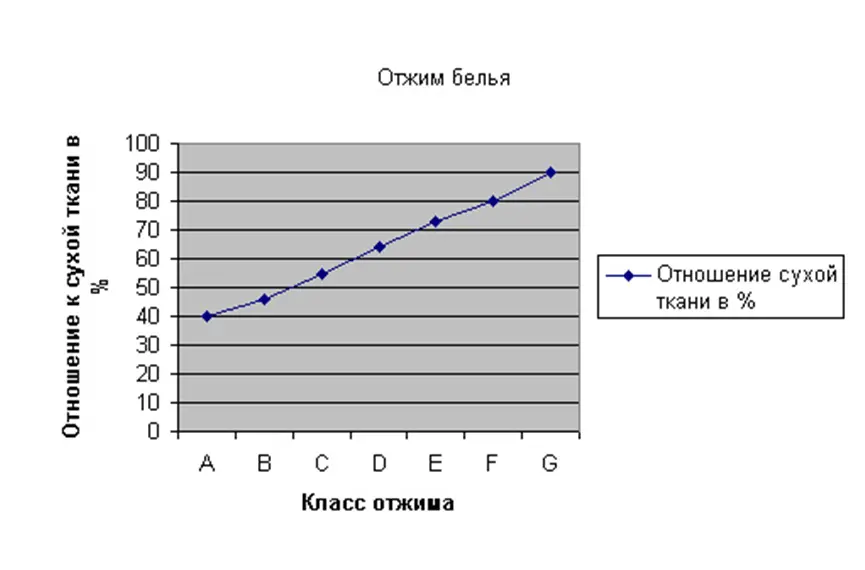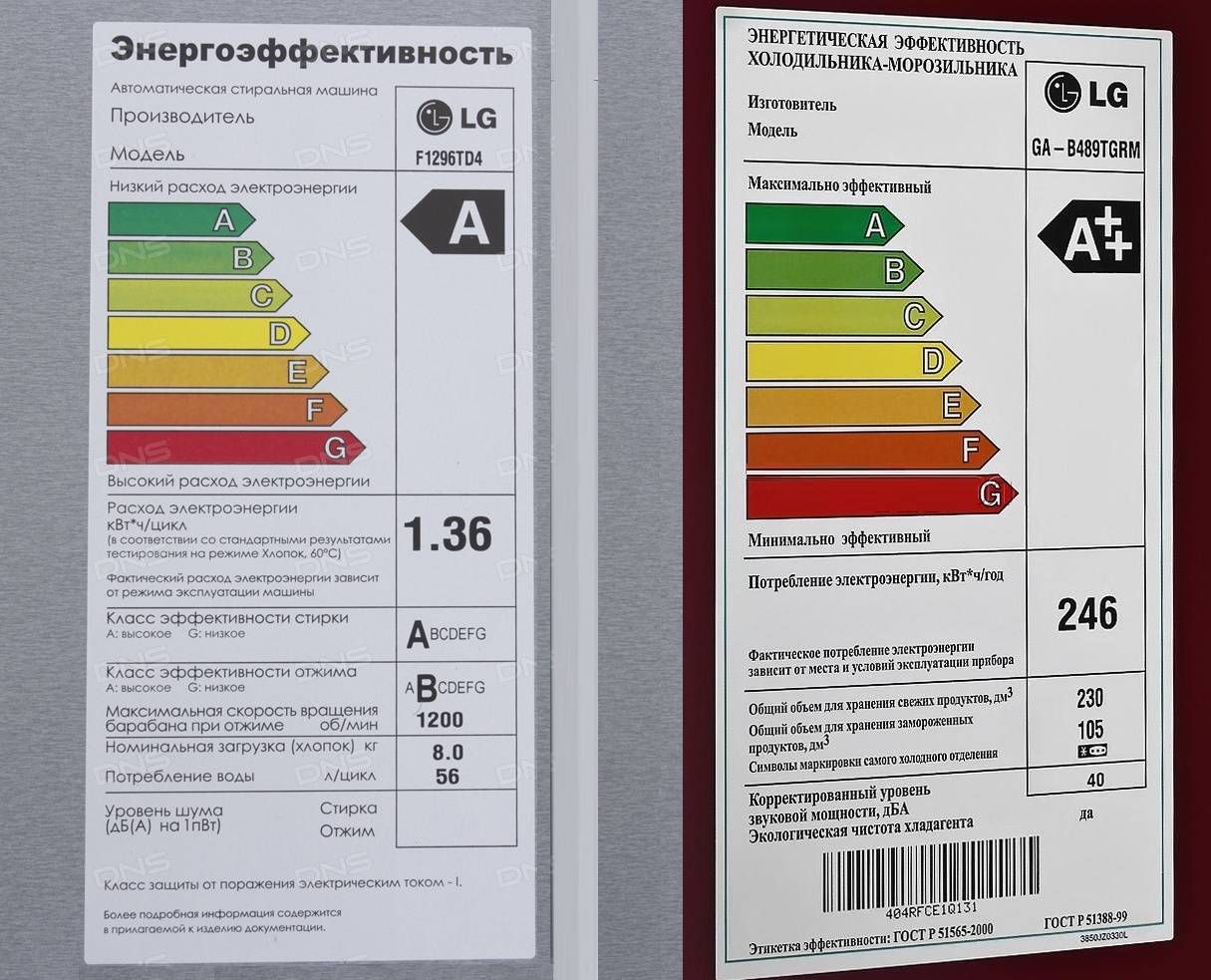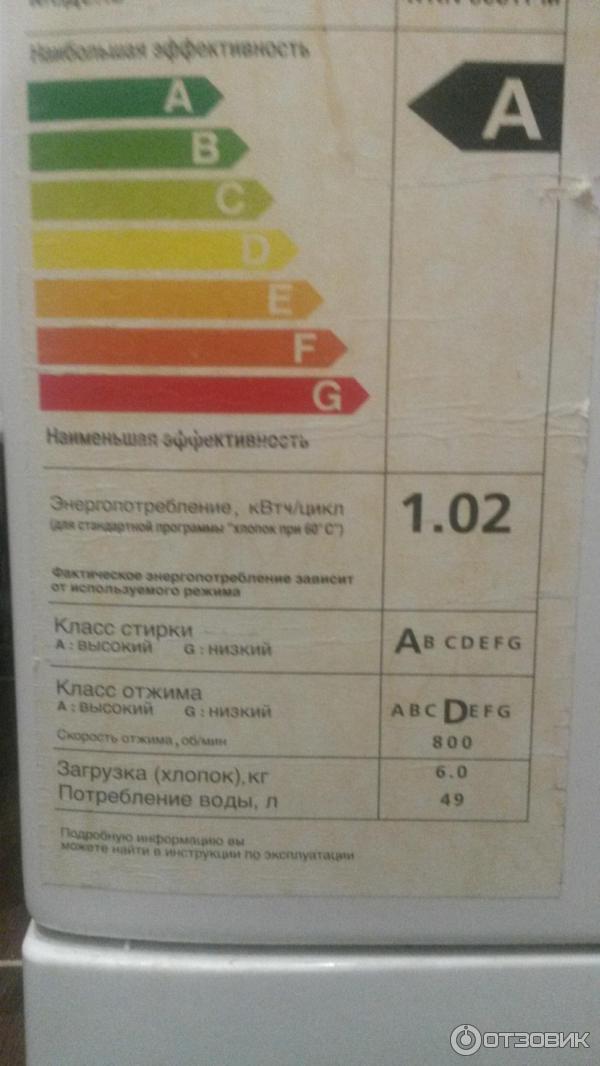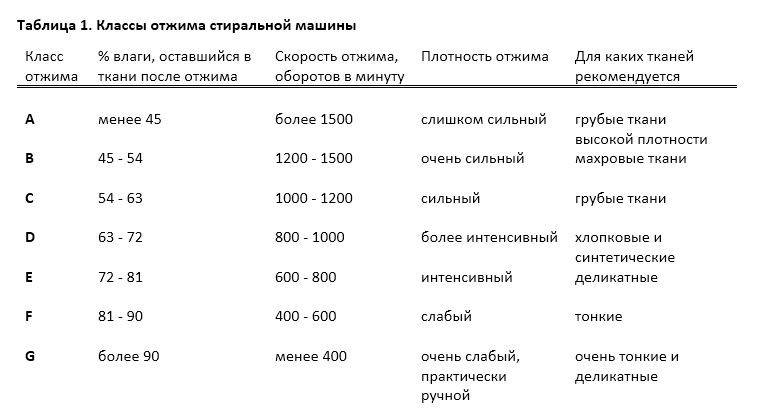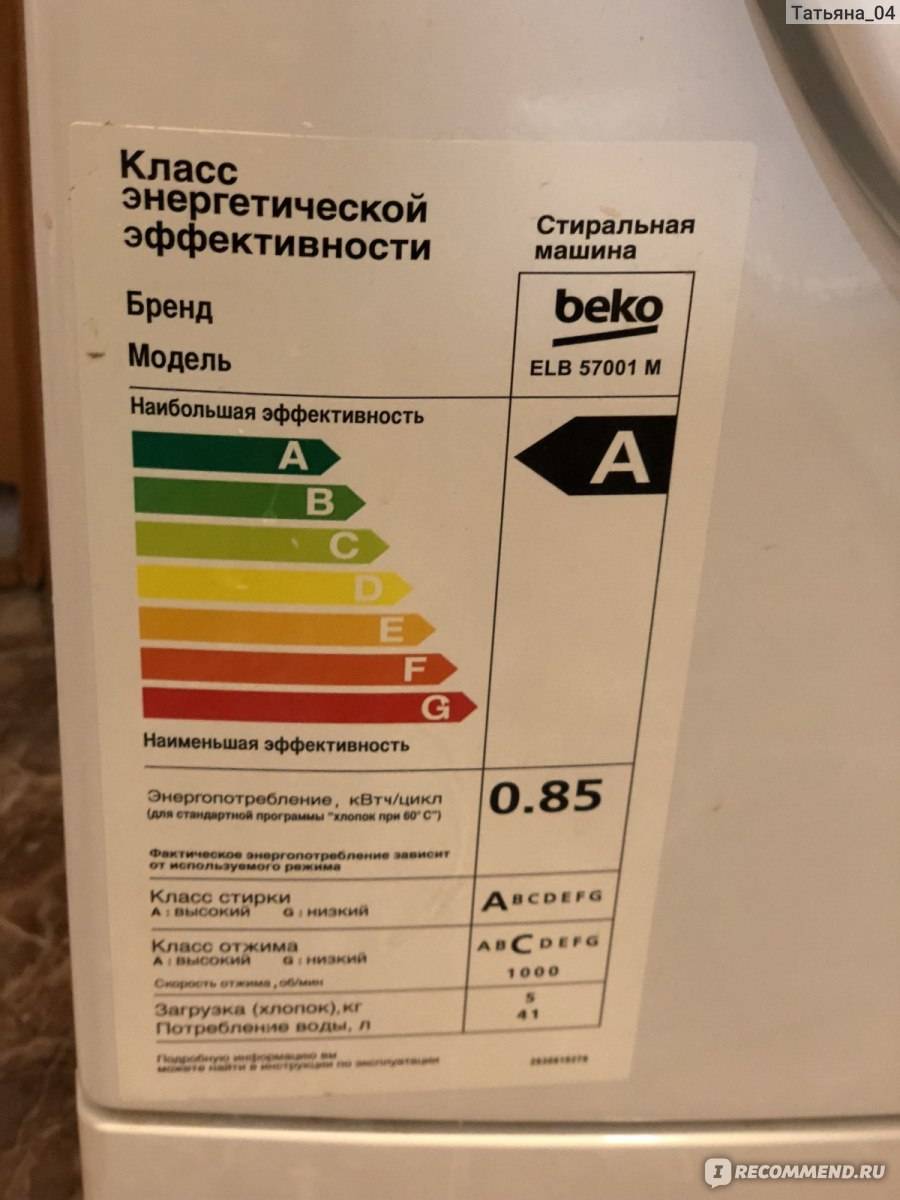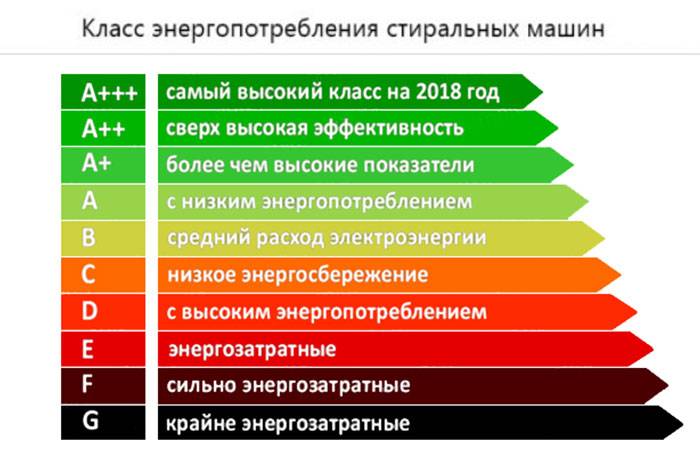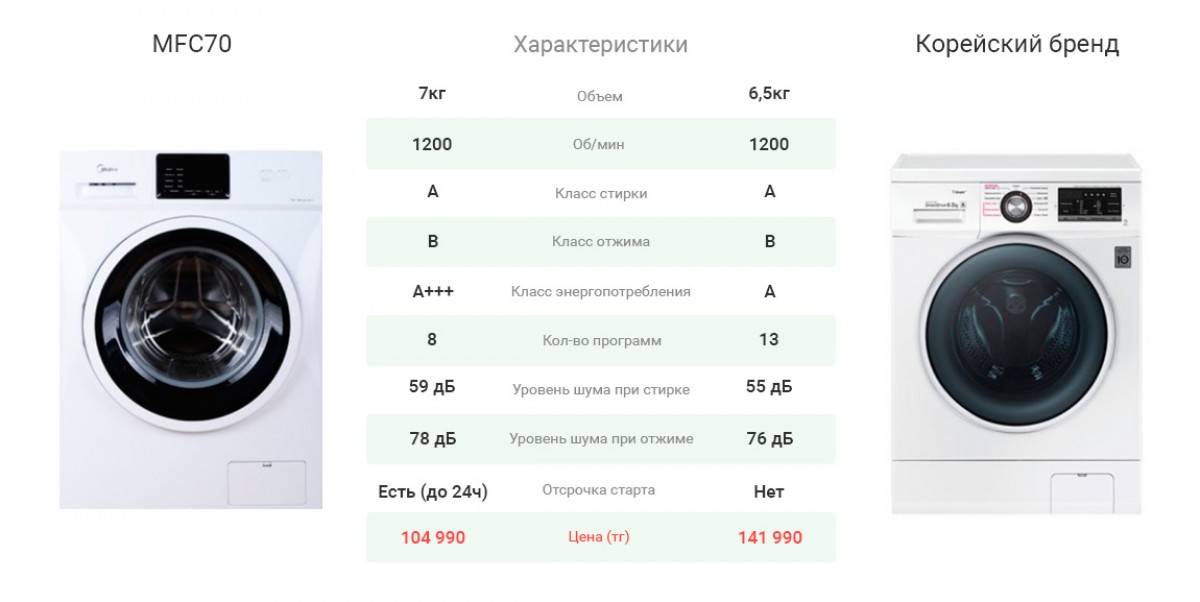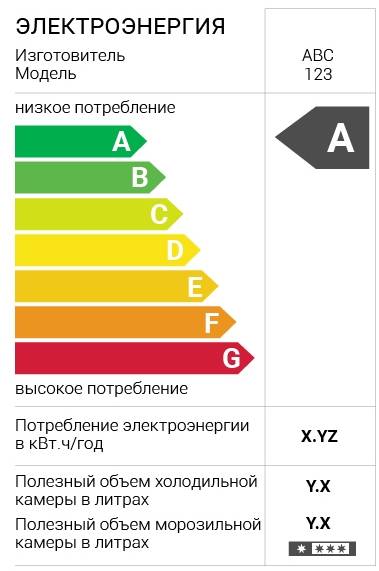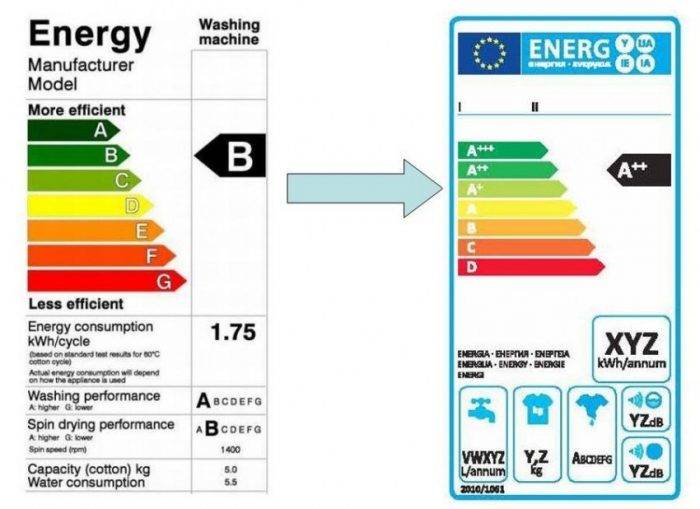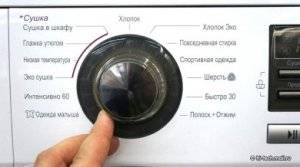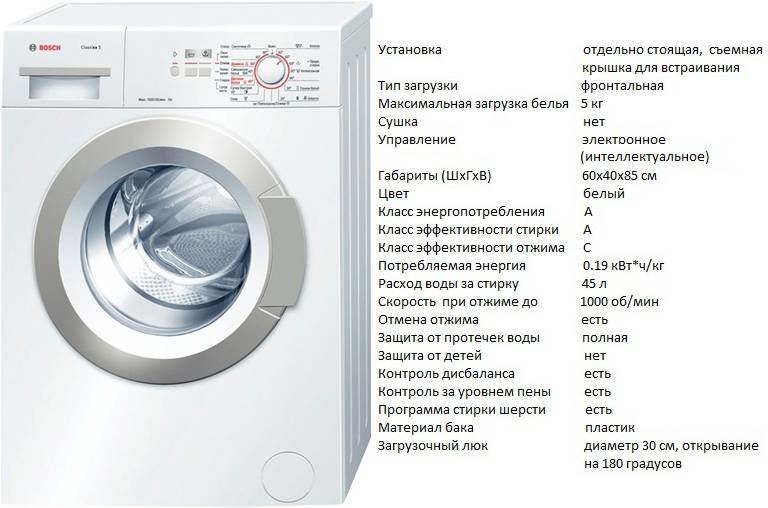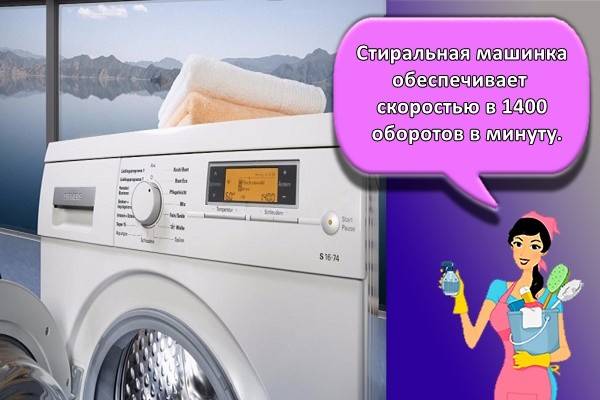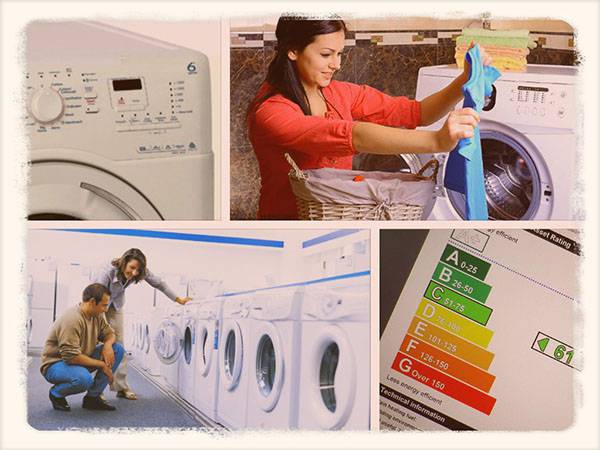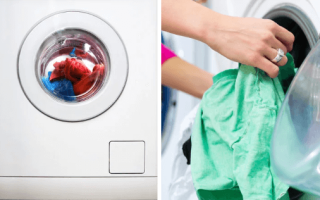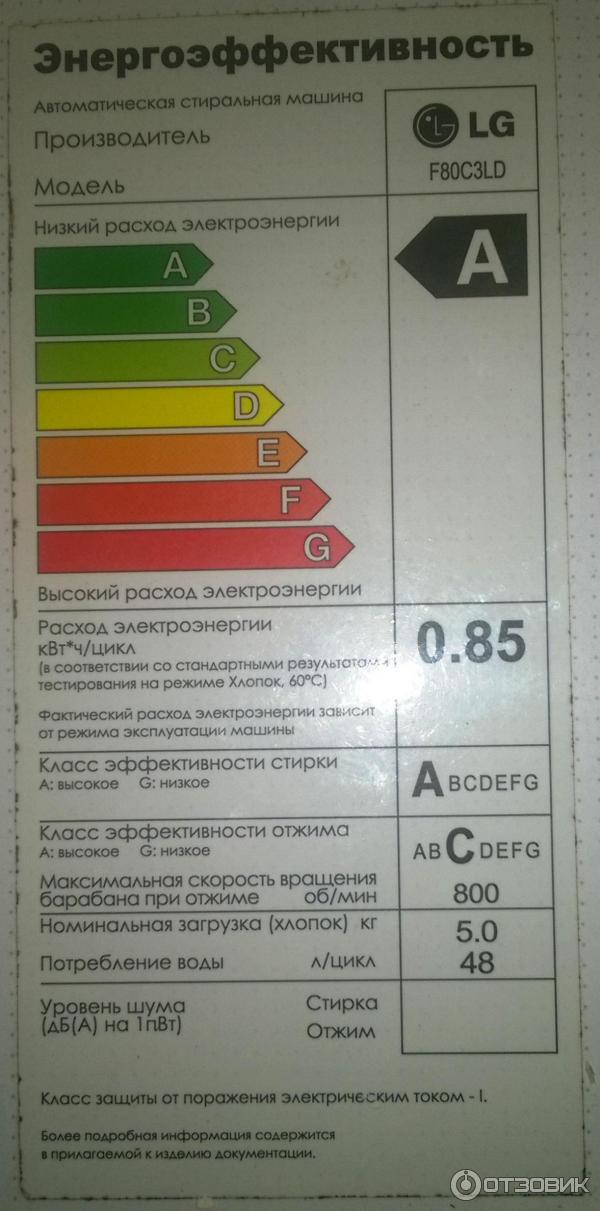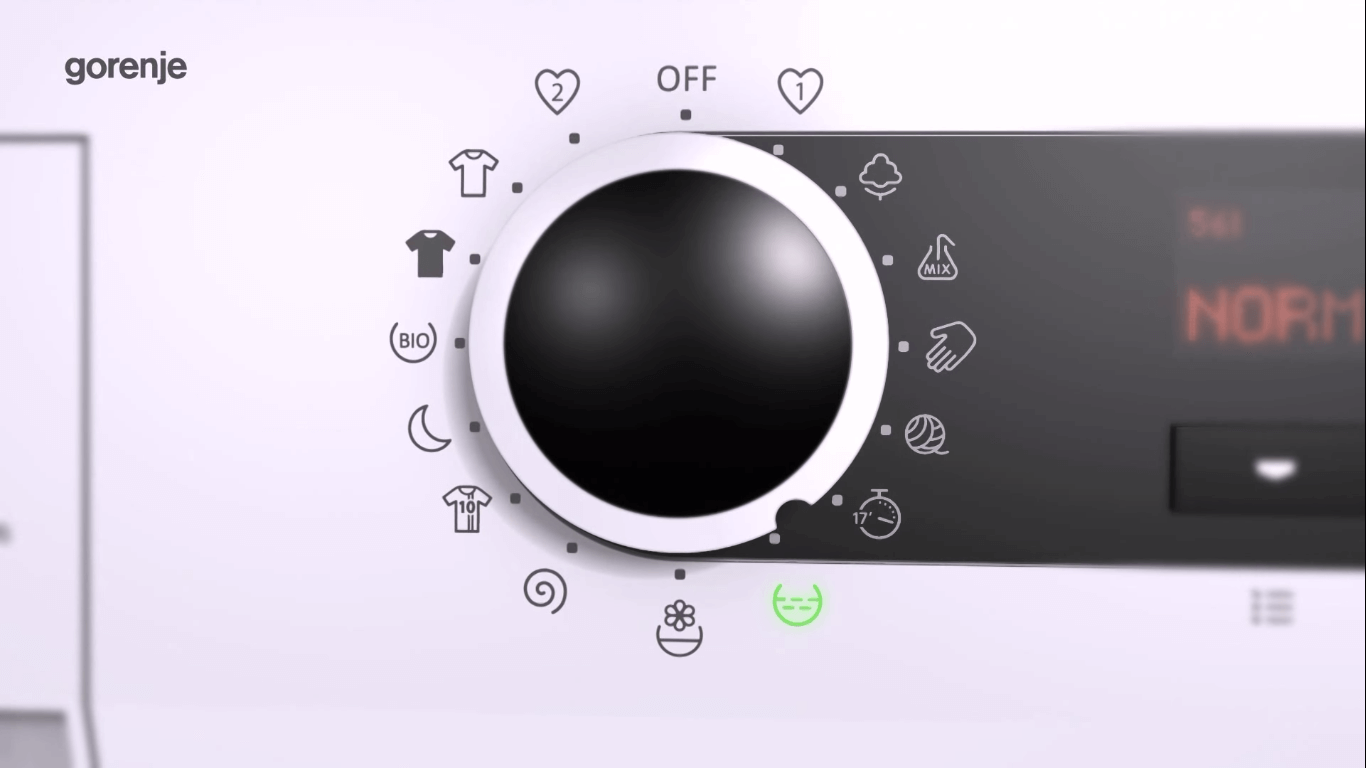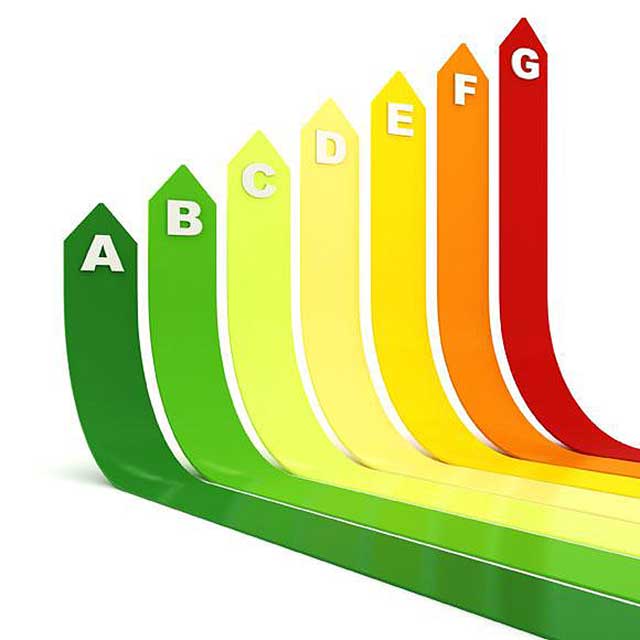Decoding and characteristics
Thanks to the letter designation that can be seen in the characteristics of washing machines, it is possible to get complete information about how fast the drum will work, how much it can dry things after washing and how much energy and time it will consume.
G
The least effective spin class is considered "G", in which up to 90% moisture remains in the washed items. These figures indicate that the clothes will only be 10% dry. Washing machines running at low rpm, around 400 per minute, will not be able to produce a better result.
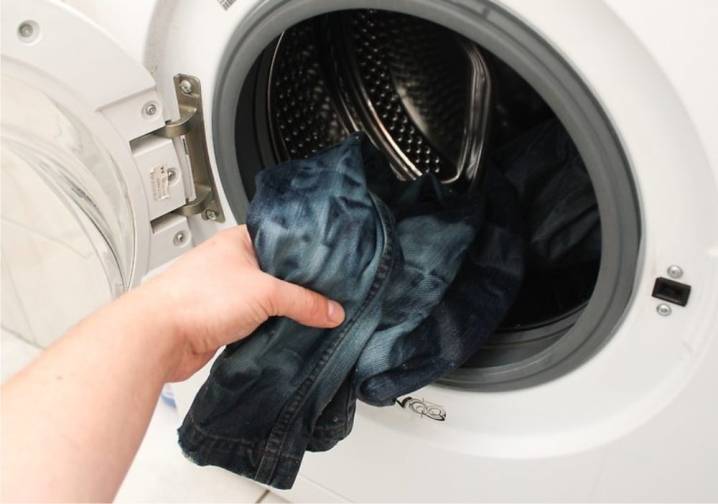
F
The spin class "F" is considered to be a little more effective, in which things are dried by 80–90%, which increases the dryness of clothes after a cycle to 10–20%. Washing machines turnover increases to 600 per minute.
E
The next in the classification is the spin class "E", in which things have a percentage of moisture after drying in the range of 70-81%, which indicates the dryness of clothes, increasing to 20-30%. In this case, the power of the machines will almost double in comparison with the "G" class and reach 800 rpm.
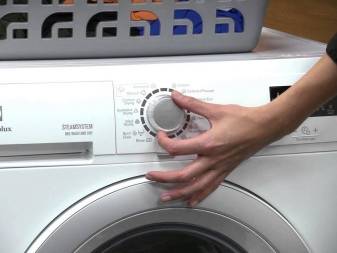
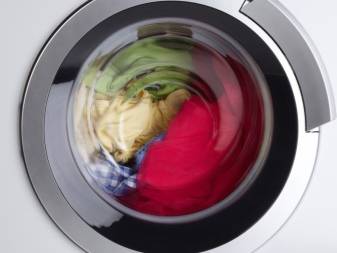
D
Washing units with a spin class "D" are considered more efficient, in which the moisture in the washed items remains 62–71%, which increases the dryness of clothes to 30–40%, and this indicator is already quite good and can suit many consumers expecting a low the cost of equipment and its normal operation.
C
Class "C" is distinguished by the best moisture extraction after washing, the efficiency is already 53–61%, that is, the machine dries clothes almost half after a full cycle. At the same time, the unit operates at a speed of 1200 rpm, which is considered an average indicator for high-quality and functional equipment.

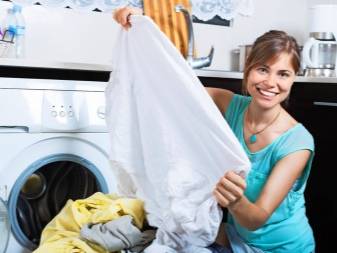
B
One of the most productive is considered the spin class "B", in which clothes after washing contain 44–52% moisture, that is, the device allows you to dry it by more than half, significantly reducing the time for completely drying things outside the machine. The revolutions of such equipment also exceed the indicators of the "C" class, as they are equal to 1400 per minute.
A
The most effective spin class is considered "A", in which things are dried as much as possible. After washing, the clothes contain less than 43% moisture, which is the best indicator for the current technology.
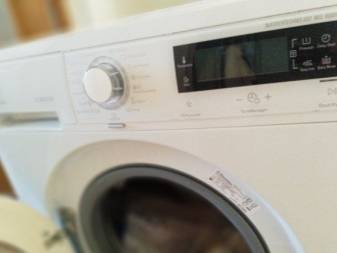
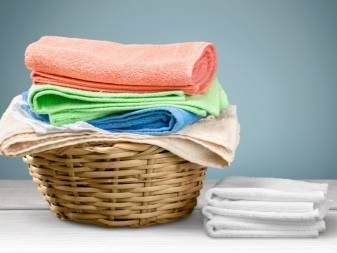
What is the washing class?
Everyone wants to get dry and clean laundry out of the drum. But not everything is so simple. In some cases, it is very difficult to remove dirt from the fabric, and not every device can do it. Naturally, freshly soiled clothes are easier to wash than clothes that have been in use for about two to three weeks. The effectiveness of stain removal in this case depends on the washing class - an indicator that characterizes the degree of cleanliness of the washed items.
This value is determined on a special scale with categories from A to G. The classification was first developed by specialists in 1995 - they identified 7 levels of cleaning. To determine this parameter, all equipment is compared with a reference model. For the test, two devices are used, the same type of powder and equally dirty things, while the program is set for one hour at a temperature of 60 degrees.

The reference fabric and the test sample are compared, according to the results of the assessment of the obtained cleanliness, experts assign a certain level to household appliances. The best devices are labeled A and B. However, remember that the reference test was invented in 1995. Nowadays, technologies are developing rapidly and specialists are inventing new innovative models that differ significantly from their predecessors. Therefore, equipment with a quality parameter lower than C should be discarded.
When buying a household appliance, you need to carefully look at the washing class in modern washing machines. What it is and how it affects the performance of the equipment, you can also find out from sales consultants.
Thus, when choosing household appliances, pay attention not only to the level of energy consumption, but also to the efficiency of erasing and spinning.
Which model is the best? It all depends on your needs and desires. If you prefer to dry clothes on the street, balcony or loggia, after carefully hanging it on a rope, then feel free to buy equipment with parameter D and below
If you value your time and prefer to take dry jackets and jeans out of the drum, pay attention to devices marked at least C. Naturally, such equipment is much more expensive, but as a result you will get well-washed things.
Now in stores there are a huge number of modern and technologically advanced models, so you have plenty to choose from.
Now you know what you need to pay attention to when buying equipment. Therefore, you should not have any questions related to what is the spin class in washing machines - which one is better to choose.
What is spinning?
The spin class is the most important characteristic by which you can evaluate modern models of washing machines. So, the higher the class of the machine, the higher the drum rotation speed during the spin cycle. The spin class will mainly affect the moisture content of the laundry after washing.
After several tests of the washing machine and deriving accurate results, a certain class is assigned to it. To determine the spin class of your machine, you need to weigh the laundry before and after washing, then the finished results are divided into each other.
Spin classes in washing machines
The distribution of spin classes will directly depend on the number of revolutions that the washing machine makes during the washing process. Most modern washing machines run between 700 and 1700 rpm. It is from this that the indicators will depend on the moisture content of the laundry, which will remain after washing.
There is also a European table with the quality of drying clothes. This table is world wide and is used everywhere. The table is designated by Latin letters. By the standards of this standard, high-class spinning will be denoted by the Latin letter A. Then the letter B will follow, which means that spinning in such a machine is slightly worse. The letters C, D in the spin designation are in the third and fourth places. This is how the machine is classified down to the last letter G, with each letter the spin quality deteriorates all the time.
What is the best spin class in washing machines?
- G - this letter means that the spin characteristic will be 90%. This means that the moisture content of the laundry after washing will be 90 percent or more.
- The letter F means that the moisture content of the laundry will correspond to 81-90%
- E - with this spin, the moisture content of the laundry after washing will be 72–81 percent.
- D - corresponds to humidity from 63 to 72 percent.
- C - the moisture content of the laundry is 54–63 percent.
- B - ranks second in terms of quality, after washing, the moisture coefficient of the thing is 45-54 percent.
- A is the best spin class of the options offered. This mode guarantees the moisture content of the laundry after washing from 45 percent or less.
In addition to the number of revolutions made by the washing machine per minute, the spinning process of the laundry is also affected by the rotation of the drum itself. For example, some washing machines are equipped with a special mode - no ironing. With this mode, the drum has a special rotation technique, which changes its speed during washing, as a result of which, after washing, the laundry remains completely straight and does not require the use of the iron. Therefore, after washing in such a machine, the laundry can not be ironed, but after drying, immediately hang it in the closet.
What type of wringing of things should be used?
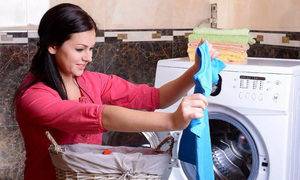
the washing machine does not need a number of revolutions exceeding the 1000 mark
It often happens that the prices for the high rpm typewriter are significantly higher than the prices for the lower performance typewriters. At the same time, almost no one on the farm will be able to notice the difference between things wrung out at 1000 rpm and at 1500 rpm. A particular difference will be seen when washing items such as jeans or coats.
Otherwise, high RPM readings can negatively affect the garment itself. In addition, things after washing at such a speed can become too wrinkled, and then they will have to be ironed for a long time. That is why experts recommend not to choose machines with a high number of revolutions, but to look closely at the very quality of the wash.
How does class affect energy consumption?
Spinning in a washing machine is an important thing, but when choosing a technique, you should pay special attention to such a characteristic as energy saving. The amount of electricity that will be spent on the operation of equipment will depend on this characteristic.
The class marked under the letter A means that the machine uses the minimum amount of energy. Also, this class has subclasses, for example, A + and A ++.
The spin class and energy consumption go hand in hand. So, the more the number of revolutions the device makes per minute, the more electricity is spent on it. In accordance with these characteristics, using a machine with a high speed during the spinning process will not be a good solution, because this will increase the electricity bill.
Experts call class B the most economical and convenient class. It will help to ensure a high level of spin, and at the same time, it will be able to save energy at the optimal level.
On the other hand, we do not use the washing machine too often, so some simply do not pay attention to the power consumption of the appliance.
Washing class
Each washing machine that you can see on sale has special stickers with a classification of the washing and spinning level applied to them. It is designated by Latin letters from "A" to "G". Modern models may have designations with a number of pluses, for example "A". This suggests that washing machines are becoming more and more efficient.
The washing efficiency is determined by comparing the two indicators of the focus group (reference machine) to the subject. The reference unit is created exclusively by authorized manufacturers who are very strict with European quality requirements. Such a unit is loaded with laundry with varying degrees of soiling.
Based on this, an index of the washing efficiency is created relative to the tested machine to the focal one:
- "A" - {amp} gt; 1.03.
- "IN 1.
- "C" - 0.97.
- "D" - 0.94.
- "E" - 0.91.
- "F" - 0.88.
- "G" - {amp} lt; 0.88.
One of the main functions of the washer is to fight dirt on the fabric. The efficiency indicator for this parameter just demonstrates the washing class. There is also a generally accepted graduation from “A” (very good wash) to “G” (very weak).
A completely natural question arises, for which a particular class is awarded to this or that technique? Naturally, it is possible to determine how much the CMA is a washing machine. ”{Amp} gt; CMA washes well, it is possible only under experimental conditions. The reference machine is taken as a reference point, which copes with this no better and no worse than the others, but always shows a constant result. Under the same conditions, on the same piece of tissue, a test is carried out, based on the results of which a verdict is issued:
- The highest score, or mark "A", is given to a machine whose washing class is defined as excellent (its efficiency index is -1.3).
- A very good wash is marked with the letter "B" (index - from 1 to 1.3).
- A good wash is assigned a class "C" (index - from 0.97 to 1).
- Normal is designated by the letter "D" (index - from 0.94 to 0.97).
- Satisfactory is "E" (index - 0.91 to 0.94).
- The bad one gets the “F” mark (index - from 0.88 to 0.91).
- A very bad wash is marked with the letter "G" (index - 0.88-0).
Do you erase by hand?
Oh yes no
Washer spin class - what is it?
Many people confuse the spin class with the number of revolutions that the drum of the device can make in one minute. Despite the fact that these indicators are directly related to each other, they are still different things. The spin class is a percentage that shows how much moisture remains in the garments after the spin is complete. Accordingly, the lower this percentage value is, the higher the spin class will be in a particular model. In other words, class is the spinning capacity: the drier the items are after being removed from the drum after spinning, the higher the spinning capacity.
In the international classification, the spin class is indicated by English capital letters from A to G, where A is the highest and G is the lowest.
Spin class in washing machines: classification
| International classification (designation in the passport of the device) | The minimum moisture content in fabrics after spinning in percent | Maximum moisture content in fabrics after spinning in percent | Rpm |
|---|---|---|---|
| A | 0-44 | ≤ 44 | ≥1600 |
| B | 45 | 54 | 1400-1500 |
| C | 55 | 63 | 1200-1300 |
| D | 62 | 72 | 1000-1100 |
| E | 71 | 81 | 800-900 |
| F | 81 | 90 | 600-700 |
| G | 91 | 92-100 | 400-500 |
I must say that models with a spin class A are practically not found, since class B or even C is sufficient for efficiently spinning the laundry. productivity.
Dependence of the spin efficiency index on the class
Which is better?
It would seem that this is difficult: the lower the residual moisture and the higher the spin class, the better. But this is absolutely not the case. Experts consider the best choice of machines with a spin class C and D. Such models are capable of up to 1000-1300 drum revolutions per minute, they wring things out well (they will not drip when you take them out of the hatch) and dry completely in a few hours at room temperature.
Buying models with a speed of more than 1400 is not always advisable, since the difference during everyday washing will be little noticeable (with the exception of washing blankets, jackets and other bulky things - they will really be drier at the maximum speed). A machine with 1000-1100 rpm is quite suitable for washing knitwear, so there is no difference in overpaying for more expensive models, especially since a large number of rpm can damage some fabrics, for example, silk or cashmere.
For household needs, a class C washing machine is sufficient.
But as for products with a spin class below class E, it is worth very carefully weighing all the pros and cons of such a purchase. Such a machine will not be able to squeeze out the laundry well, so the drying time can stretch even for a day, especially if you live in a region with a humid climate, purchasing such a washing machine will be a waste of money, and soon you will definitely want to replace it.
Classification
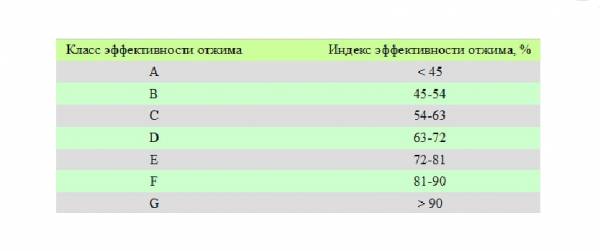
If you carefully study the instructions for the washing machine, you can find letters there, which denote spin. To identify classes, the letters of the English (Latin) alphabet from A to G are accepted. The first denotes the highest level, and the second, respectively, the lowest. There are also intermediate values, they are marked with a "+" sign. The more pluses next to the number, the better. This classification is accepted all over the world, therefore, wherever your “home assistant” is produced, the designations will be the same.
The spin class depends on how fast the drum of the washing machine is spinning, and how much it squeezes out things. In general, this figure can vary from 400 to 1800 rpm.
If you have lost the product passport, you can calculate the spin class yourself.To do this, it is enough to calculate the difference between the weight of things before and after washing and divide the resulting indicator by the weight of dry laundry. The result obtained in this way must be expressed as a percentage.
The lower the percentage of moisture remains in things after spinning, the faster it dries, the higher spin class the washing machine has. Below we will show how much liquid in things is left by units of different classes and what number of revolutions this corresponds to:
- "A" - up to 45% - from 1600 rpm.
- "B" - 46-54% - 1400 rpm.
- "C" - 55-63% - 1200 rpm.
- "D" - 64-72% - 1000 rpm.
- "E" - 73-81% - 800 rpm.
- "F" - 82-90% - 600 rpm.
- "G" - more than 90% - 400 rpm.
The calculation clearly shows that the difference between the lower and upper boundaries is quite significant, while the neighboring indicators are not so different. It should be noted that washing machines of the last two groups are almost not produced anymore. Such "dinosaurs" can be found only in commission or stock stores of household appliances.
Additional functions
Often, equipment sellers try to attract a buyer by listing additional functions of the machine. But what are they and what are they for?
"Quick wash" is the best solution for those who urgently need clean laundry. The cycle in this case lasts from 15 to 30 minutes.
"Delay start" - the function helps the owner of the machine to save energy. For example, washing starts at night and consumes energy at reduced rates. Or, the owner of the equipment simply needs dry linen by a certain moment. You can delay washing from 1 to 24 hours.
“Pre-wash” removes even stubborn stains. This function soaks the laundry and then starts the main cycle.
"Bio-wash" is a kind of stain removal stage. Before washing, the machine keeps the temperature in the region of 30-40 degrees Celsius so that special granules - enzymes contained in the powder - corrode the dirt.
The function "Protection against leaks" or "AquaStop" (AquaStop) protects the machine from water leakage after washing. Can be applied using: thickened inlet hose, solenoid valve, sump. It can be complete and partial.
Unplugging the washing machine?
Oh yes no
Standard spin classification
Class assignment has a specific purpose. It is necessary to identify the levels of performance of technology. Tests must be carried out to determine the quality of the wash. As you know, stains on clothes have a different reason for their appearance, and the fabrics also differ from each other.
For the duration of the tests, the quality of the wash in the test washer is compared with that in the standard washer. The process is as follows: specific materials with specific contaminants are taken and loaded into washing machines. The devices wash the material for about one hour at a temperature of 60 degrees, using the same powder.
At the end of the work, the fabrics are compared with each other with a special device. This device is intended for a more independent assessment, and excludes subjective factors. Based on the results, the washing class is determined. The parameter of diagnosis is the efficiency value corresponding to its class.
Class B - very good washing
Grade C - good wash
Class D - normal wash
Class F - poor wash
Class G - very bad wash
As in the definition of the previous parameter, in this case, research is also carried out. The spin quality is determined by weighing the laundry in dry and wet form. The difference between these results is what justifies the spin class. Thus, letter designations also start with A and end with G. Where "A" is the highest.
The spin quality is determined by such points as:
- Drum size
- The number of revolutions of the device
- Duty cycle time range
- Type of laundry when spinning
The moisture index of the laundry after the spin process is as follows:
- "A" - {amp} lt; 45%.
- "B" - 45-54%.
- "C" - 54-63%.
- "D" -63-72%.
- "E" - 72-81%.
- "F" - 81-90%.
- "G" - {amp} gt; 90%.
Both washing and spinning are mainly influenced not only by the number of drum rotations, but also by its method. There are some modes when not only the speed changes, but also the principle of rotation itself.
The result depends on the performance of the technique - the degree of cleanliness of the laundry after cleaning it. They learned to determine this degree using the developed special standard of purity - the class.
The study consisted of testing the technique on stained fabric.
- Float a certain contaminant and stain the fabric.
- A piece of cloth was placed in a kind of reference machine.
- Powder was added.
- Set up the reference program.
- We started a wash with a temperature of 60 degrees Celsius above zero.
- An hour later, we got the best option, called the standard.
An important parameter for washing equipment is the spin class. It shows in percentage how damp your clothes will be after washing. This indicator directly depends on the number of revolutions of the machine per minute. That is, the more often the drum spins, the drier things will be.
The moisture percentage can be easily calculated - it is the ratio of the weight of the laundry before and after the washing process. Depending on the spin class, washing machines are assigned ratings from "A" to "G", each of them corresponds to a certain humidity and number of revolutions:
- The best spin quality is marked with the letter “A”, with it the residual moisture of the laundry will be less than 45%.
- The value "B" means that after spinning the fabric will remain moist by 45-54%.
- "C" means that the technician will wring out the laundry, leaving it at 54-63%.
- A value of 63-72% guarantees class "D".
- “E” means that after washing, the items will be 72-81% damp.
- "F" corresponds to a result of 81-90%.
- The machine with class "G" after washing will show the moisture content of the laundry over 90%.
The permeability of the material also affects the dryness of the fabric. So, a chiffon blouse and jeans after washing together will have a different percentage of moisture.
In most modern washing machines, several spin modes are programmed, this is also worth paying attention to when buying
What are the criteria for assigning a washing class
No matter how trite it may sound, the washing class is assigned to the machine according to the quality of the wash. In this case, a special test is carried out in which the tested "washing machine" is compared with the reference one. During the test, the same amount of powder is poured into both devices, a piece of fabric with artificially applied identical contaminants is placed in the washing drum, after which an hour wash is started at 60 degrees Celsius. The results of the efficiency of the latter are determined by an automatic technique, after which the experts carry out the necessary calculations, and the CMA finally gets its "letter".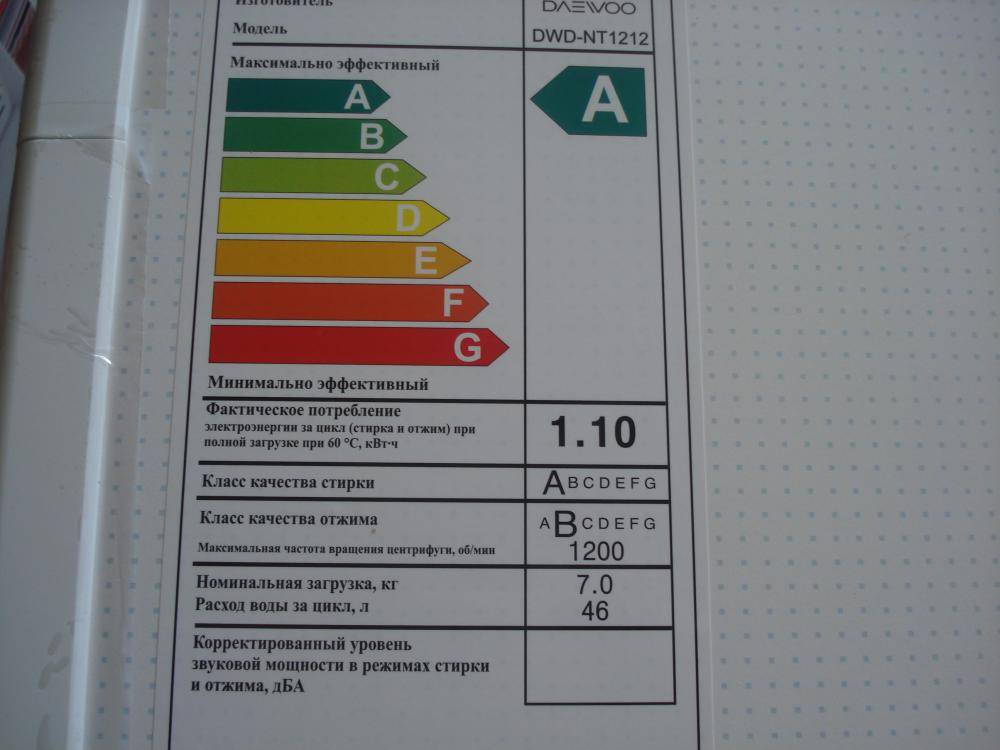
Let us dwell a little on class A. According to international standards, such a class is given to a “washing machine” that can cope with any dirt and on any fabric with the correct selection of the washing mode. In no case should the fabrics be damaged during such washing. It is worth noting that if we are talking about washing everyday things of any color, except for white, then washing class A will be impossible to distinguish from washing class B, no matter what the "professionals" may say.
Speaking of the most important parameters for any washing machine, one cannot fail to mention the energy consumption and spin classes. The first one determines how much energy is needed for a high-quality wash, and is denoted by the same letters of the Latin alphabet, but with slight differences.
New technologies allow manufacturers to reach ever lower levels of energy consumption, and today in the markets you can find equipment with energy consumption levels indicated by the letter A +, A ++ and even A +++. The more "pluses", the less electricity will be required for work and the less, in the end, the owner will spend.
As for the degree of spin, it is even easier with it. This indicator determines the amount of moisture remaining in the washed laundry, which is given to the user. This quantity depends not only on the maximum drum rotation speed, but also on its diameter. The most powerful machines for today have a maximum drum rotation speed of 1400-1500 rpm.
Since high-quality spinning affects the final weight of things after washing, devices with a high spin class will be useful to fragile housewives, as well as people who do not like to spend a lot of time drying or owners of small everyday wardrobes. There is an opinion that top-loading machines wring out clothes much better, but this is far from always the case, and their working vibration, as a rule, is stronger.
Which class is better?
It would seem that the drier the laundry at the end of the washing machine cycle, the better for us. But before deciding to buy equipment that has a record number of drum revolutions per minute or the most expensive model that has an “A” rating for spin efficiency, think about whether it is really necessary to race for the best? Any experienced housewife will tell you that overly wrung out laundry crumples, and such things are harder to iron after completely dry. It will be better if the things are slightly damp when taking them out of the machine, so the fabric will straighten out during drying, and you will not need to use steam when ironing, and perhaps you will not need an iron at all.

